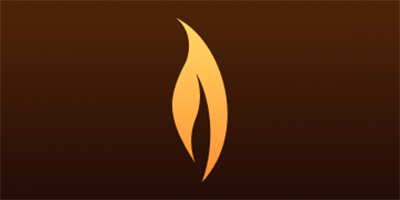This memorial website was created in the memory of our colleague and friend, Don Backer. Please post your comments and stories here.
The Donald C. Backer Memorial Fund has been set up at the University of California, Berkeley to honor him and insure that the science he pursued with relentless energy and passion will continue. If you would like to donate to this fund, please go to http://givetocal.berkeley.edu/browse/?u=7
Tributes
Leave a tributeI miss you as much as ever. Your beloved Astronomy Department needs you more than ever. You'll be delighted to know that the Allen Telescope Array has received new funding, enabling unique science. Still, American astrophysics dearly needs your guidance and wisdom.
We all miss you so much. It's not just the the astronomy community that needs your kindness, communication, and human appreciation.
When I reflect on you, I always think of two aspects of your life.
You were dedicated to extraordinary innovation, both in ideas and instrumentation. From millisecond pulsars to CASPER, you so enjoyed new productive directions.
I also reflect on your dedication to respectful interactions and peaceful bridges. Sometimes I thought you emphasized human connections and handshakes more than necessary, but I now know you were right.
We miss you as much as ever. Your warmth and appreciation of the human and social aspects of science still move me. You loved people as much as science. Your science lives on, with the pursuit of many exciting time-dependent phenomena observable at radio and all wavelengths. And your science lives on, with your many students who are continuing to do beautiful research, a living tribute to you.
Your passion for dialogue, collaboration, and innovative research rings true for everyone to this day. Thank you for your thoughtfulness and kindness.
Geoff
We need you now, more than ever, in so many different ways.
Meanwhile, we're revving up Green Bank with CASPER technology, all a tribute to your inspiration, still vibrant.
-Geoff
Sincerely, Ursula and Tom Wilson
The curved wall near the entrance to NCH seems to be acquiring its only proper name - the "Backer Wall".
remembering him & missing him here.
Leave a Tribute
I miss you as much as ever. Your beloved Astronomy Department needs you more than ever. You'll be delighted to know that the Allen Telescope Array has received new funding, enabling unique science. Still, American astrophysics dearly needs your guidance and wisdom.
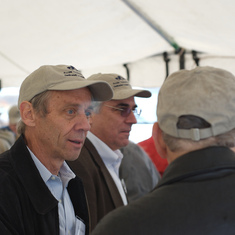
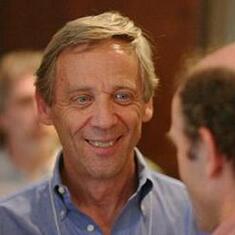
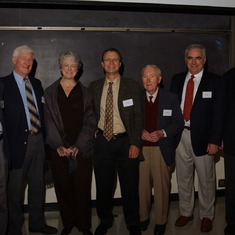
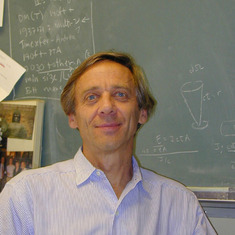
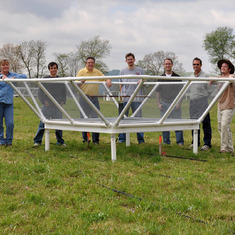
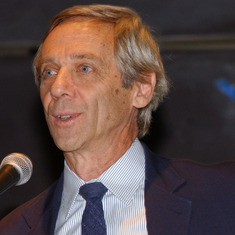
Two Memorable Green Bank experiments
I first met Don in 1971, my first year of grad school at UVa and he was on his NRAO PostDoc.
He was always willing to chat and support a callow grad student.
I remember two experiments he did over the years in Green Bank with especial awe because, as usual for Don,
he used equipment in extremely novel ways.
In the early 1970s he followed *individual* pulsar pulses in frequency by using all 5 GB telescope independently
tuned to different frequencies (the 140 ft, the 300 ft, and the 3 85 ft interferometer elements). This required
writing a complete operating system for the interferometer which had never at that point been used as
individual telescopes tuned to different frequencies.
In the mid 1980s he studied giant pulses from the Crab -- these things are 103 stronger than the mean pulse
intensity but are both infrequent, say, 1/5000, and sporadic. His pulsar back end in GB had finite bandwidth of
course and, in those days, finite storage capacity. So he couldn't just crank away and observe continuously.
His solution was to team with Tim Hankins who observed the Crab at L band at the VLA which had a mode
where they could observe constantly albeit at low resolution. When Tim found a giant pulse, he sent a
trigger signal to Don at the 140 ft *over the Internet* so he could turn on his pulsar backend to sample
at 800 MHz with 85-2. To make this work they had to synch the clocks of
their computers for days, again over the internet, taking out packet speed fluctuations by polling many,
many different clocks around the internet. At least that is what I recall.
As Jim Moran said in Physics Today, we are all much poorer now from the loss of his humanity as well as his technical gifts.
Field trip!
i had been working for the Astronomy Department only a short while, when Don thought it would be a good idea to take the new hires up to Hat Creek Radio Observatory for a look around & to meet the staff there. I jumped at the opportunity to leave town; what could be better than to be in Mount Lassen country? Don, Robert, Andrea, & I met in the early hours downtown Berkeley & headed north. Once there, we had a staff meeting & now were able to put a face to the names of people we had been working with via telephone/email. Susie & Don took us around in the Jeep & gave us the grand tour, Don trying his best to explain in layman terms just what was going on up there; yep, a little hot & arid, but beautiful country all around. Susie advised checking out Burney Falls, where we took a hike and considered jumping in the lake nearby. We luxuriated in our surroundings; exploring the lava tubes, taking beautiful moonlit bicycle rides in the middle of the night.On our way back home, we tried to climb Mt. Lassen, but being a little unprepared - such as trying to scramble up steep icy inclines in tennis shoes - proved to be too much, so we had to, most unwillingly, let it go...I still find it very difficult that someone so vital and engaged with life and those around him could be so suddenly gone from us. I will miss him, more than I can say.
nina ruymaker
Goodbye, Don
In the past 5 years, I attended "executive Dept meetings" weekly with Don, while he was Chair of the Astronomy Dept. and then when he was the Director of RAL. Of all the discussions, visions, budget troubles, restructuring, struggles, and conflicts that arose in those meetings, one thing stands out far above everything else. Don was always finding ways to improve the communication, coherence, and collegiality of the astronomers in Berkeley.
He always had a new organization in mind that would join everyone together to makes us more than the sum of our parts. "BACI" was the name of his beloved organization that brought Berkeley Astrophysics together. He loved the idea that if people worked together they would be more creative and productive, and enjoy their work more. He appreciated that people working together, rather than separately, was the key to unexpected innovation.
He similarly took the Department's decadal Academic Review to heart, spending countless hours constructing that document, always involvilng everyone in the process. He similarly encouraged a diverse but coherent group of radio lab, digital electronics, and radio telescope design efforts, always thinking that some FPGA-type or DSP-type widget would emerge when folks with different expertise interacted. And the new Campbell Hall project brought all of this together as Don constantly encouraged the architects to design interactive areas for astronomers to chat and bridges to allow cross-fertilization with physics. Collegiality and interaction were dear to Don. I've learned a lot from his patience, kindness and people-oriented science.
